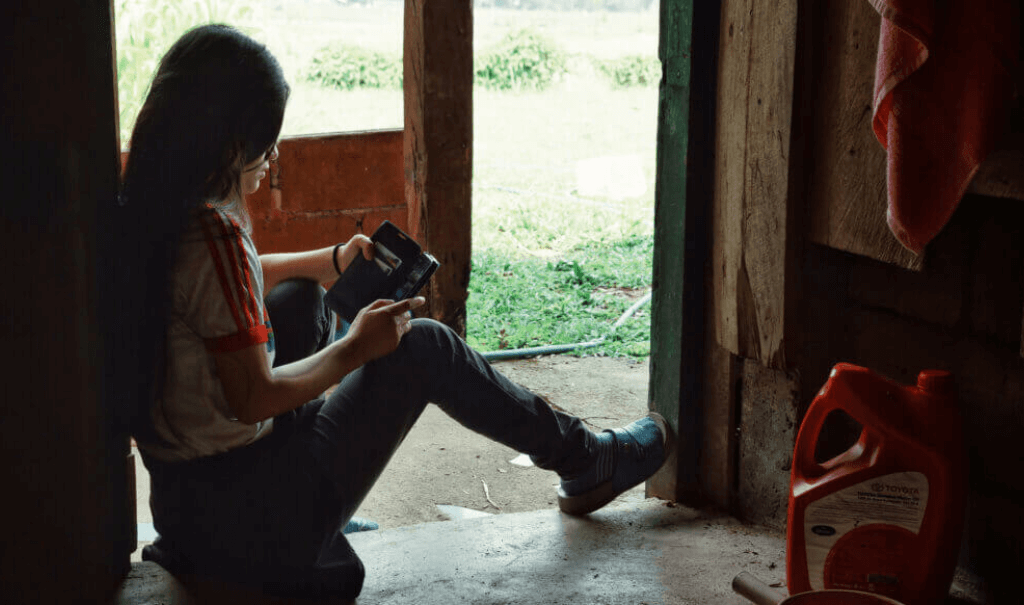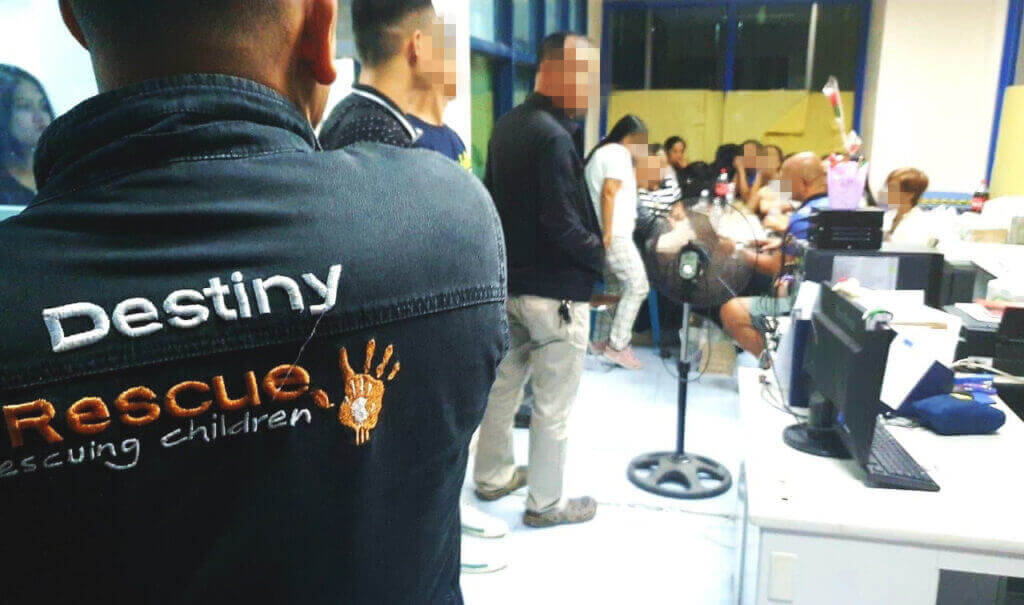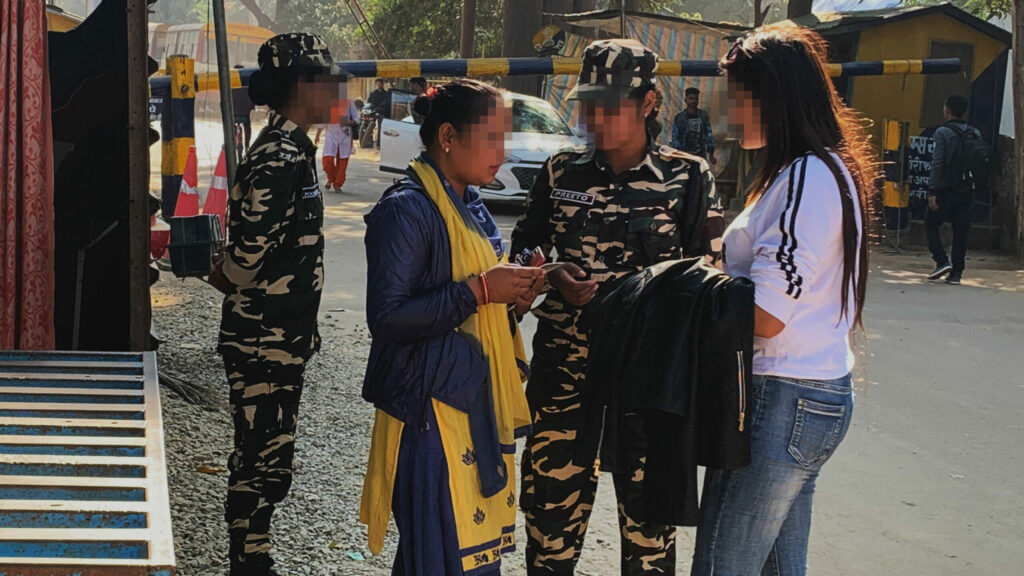The internet has changed the way we access the world. Unfortunately, human traffickers and child abusers have seized the opportunity, using the web to exploit children to a broader audience.
The Online Sexual Exploitation of Children (OSEC) is just what it sounds like: the internet-facilitated abuse of children. Despite being “virtual,” the damage caused by OSEC is still very real to the victims. But that’s where the similarities between OSEC and other forms of exploitation end.
The substantial differences make this emerging crime more challenging to address.
Location
The way exploited children are typically located depends on where Destiny Rescue (an organisation whose work in Thailand, Nepal, Cambodia and the Philippines Child Rescue helps fund) is operating, but generally, their agents know where to begin. From red-light districts in South Asia to slums in East Africa, agents use local tips, food packs and undercover investigative work to find and rescue kids. However, as groundbreaking as these methods are, they don’t work in OSEC cases.

Determining the physical location of children suffering online abuse can be extremely difficult.
The internet has become more accessible than ever, even in relatively poor, remote areas. Recent statistics regarding internet use in Thailand indicate that the number of children and young adults using the internet is rising. That explosion of access, coupled with automated translation programs, has suddenly put children with a poor understanding of online dangers within reach of predators. With over a million child predators online at any given time according to a briefing by the European Parliament, the danger to children has never been greater.
Abusers can operate anywhere with an internet connection, from dense cities to rural villages. To find them, investigators must follow the trafficker’s online footprint through the web to determine where they actually are.
Often, perpetrators are discovered in a completely different country than the children they abuse–which means rescue operations need to coordinate with two separate nations’ law enforcement agencies to find both parties.
Investigation

The difficult nature of tracking children and perps through the web demands unconventional investigative work. Rather than canvassing physical locations, agents must sort through fake social media profiles, track IP addresses and confirm that the abuse is current. Furthermore, intel from one nation may lead to a child being abused in another, making the process even more complex.
Low reporting is another issue. Because so many victims are either manipulated into sharing sexually explicit material or forced to participate by a parent, most children don’t feel comfortable reporting abuse to authorities. A recent study in Thailand that interviewed OSEC survivors showed that less than 1% of victims reported their abuse to authorities or caregivers. Low reporting rates combined with the hidden nature of this crime means that thousands of children across the world are sitting in the darkness of exploitation, waiting to be rescued from this devastating crime.
Exchange of money
Another complicating factor is how money is exchanged. When agents participate in a raid to rescue children from traditional sex trafficking, they must document the transaction of money for the sale of sex with a child. That payment lays the groundwork for police to prosecute the trafficker.

With online exploitation, however, following the money is much more difficult. Exploiters can use a variety of payment methods and conceal the exchange as the sale of something more innocent. To muddle matters further, the money transfer agency may operate out of a third country, requiring approval from three separate national governments to investigate the case in each country.
Exploitation
The way children are exploited also changes the way Destiny Rescue helps them. In cases of physical abuse, getting children out of the abusive situation ends the abuse. While they certainly have a long road to recovery, the abuse is finally over.

With OSEC, finding the child’s location is only the first step of the rescue process–the children are still being exploited and abused. Removing explicit pictures or taking down websites facilitating the abuse can take much longer. Unfortunately, even if the child is physically safe, images and videos of abuse may still be in circulation, deepening the child’s harm.
A study from the United Nations describes this as a “layering of harms” in which “each subsequent viewing or distribution of that material serves to re-victimise and thus further exacerbate the psychological damage to the abused.”
While there are many avenues that perpetrators take to abuse children online, there are two techniques of growing concern:
Sextortion: In these situations, abusers will form relationships with minors through social media, often posing as someone of their age. Once they’ve groomed the victim, the perpetrator will ask for sexually explicit images of their target. They then use these images to extort more pictures from the child before eventually selling the images online to predators.
Livestreaming: This growing segment is particularly disturbing. In these situations, the child’s guardian–often a parent–will abuse the child live on camera for customers. Typically, these predators pay an hourly fee to “direct” the abuse of the child.

Destiny Rescue agent Caleb, a former police detective, says that even with his many years working to fight human trafficking, livestreaming stands out as particularly damaging.
“It’s one of the most harmful crimes that I’ve ever seen in my policing or investigative career, generally because of the connection between the victim and the abuser,” he says.
A study regarding OSEC and livestreaming abuse outlined that in 74% of cases (in the Philippines) the child sexual abuse material (CSAM) was facilitated by someone in the child’s “circle of trust,” such as a parent, guardian or family friend. This means that children are often trapped in a domestic environment with their abuser. It is confusing to a child when their parent or guardian feeds them, provides for them, and sends them to school most of the day but also sits them down in front of a computer to abuse them in front of a paying predator.

Even more heartbreaking, the rescue process in these cases often deepens the trauma before healing can begin. Many of these young kids don’t fully understand that they are being abused, so when the police arrive to take their guardian away and find the child a new home, the child’s entire family nucleus is destroyed. The structure that held their life together is shattered, however warped it may be.
Important stats
To help convey the impact of OSEC, Caleb shared some vital information he gleaned from his extensive experience and published studies.
Escape is much more difficult than most cases of in-person sexual exploitation. Because abuse often occurs in a private, secluded home, OSEC victims are generally exploited three times longer than in a bar or brothel situation.
According to a study by the European Parliament on curbing the surge in online child abuse, over half of those who consume online CSAM admit to abusing children physically offline.
Despite the enormity of the problem, police have difficulty solving cases. According to The National Centre of Missing and Exploited Children, one country in Southeast Asia could only pursue less than one percent of the OSEC cases that occurred. Thailand alone received over 720,000 tip-offs regarding OSEC from the National Centre of Mission and Exploited Children last year.
What Destiny Rescue’s doing about it
Despite the overwhelming scope of the problem, we are proud to play a part in creating innovative solutions to ending OSEC through our support of Destiny Rescue.
Agents like Caleb have helped establish deep, trusted relationships with law enforcement agencies worldwide. Many of these agencies see Destiny Rescue as a partner and call on them regularly to assist with investigations. Together, they use proactive investigation techniques and world-leading technology to identify and rescue children and hold their abusers to account.

The way they’re using this technology is groundbreaking. In short, there’s never been a more effective tool in the battle to end the exploitation of children online. Stay tuned for more about how this technology is saving children in an upcoming post!
Donate with Confidence
The Child Rescue Charitable Aid Trust is a registered New Zealand charity: CC 50751. An Annual return is filed each year with Charities Services which is a NZ Government organisation under the Department of Internal Affairs. Annual reports to Charities Services can be viewed here. View our Financial Integrity webpage here.
Child Rescue is the New Zealand branch of the Destiny Rescue family, a global network of organisations. Our collective focus is to rescue children from sexual exploitation and human trafficking, and supporting their long-term freedom.

 US & International
US & International Australia
Australia United Kingdom
United Kingdom